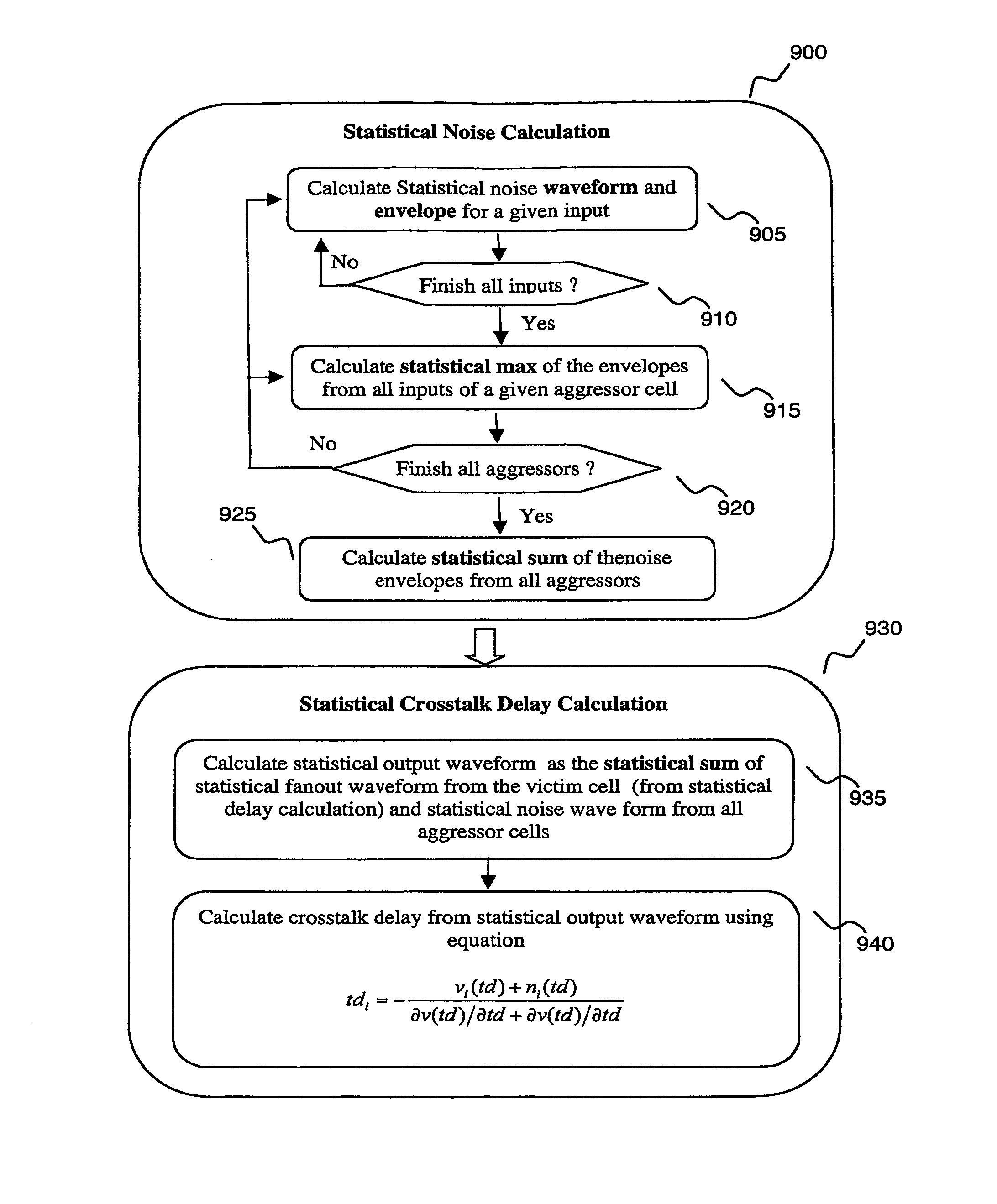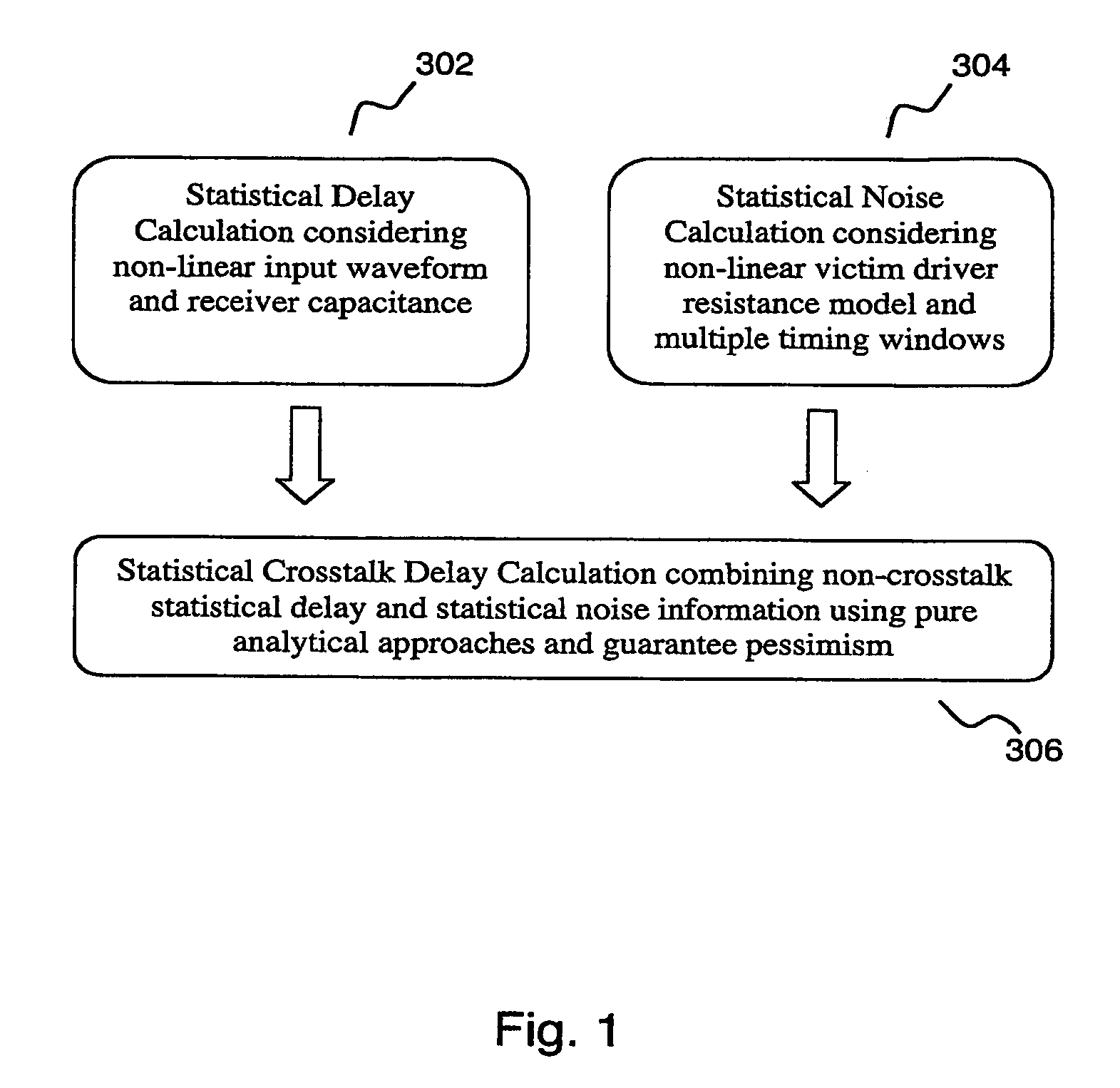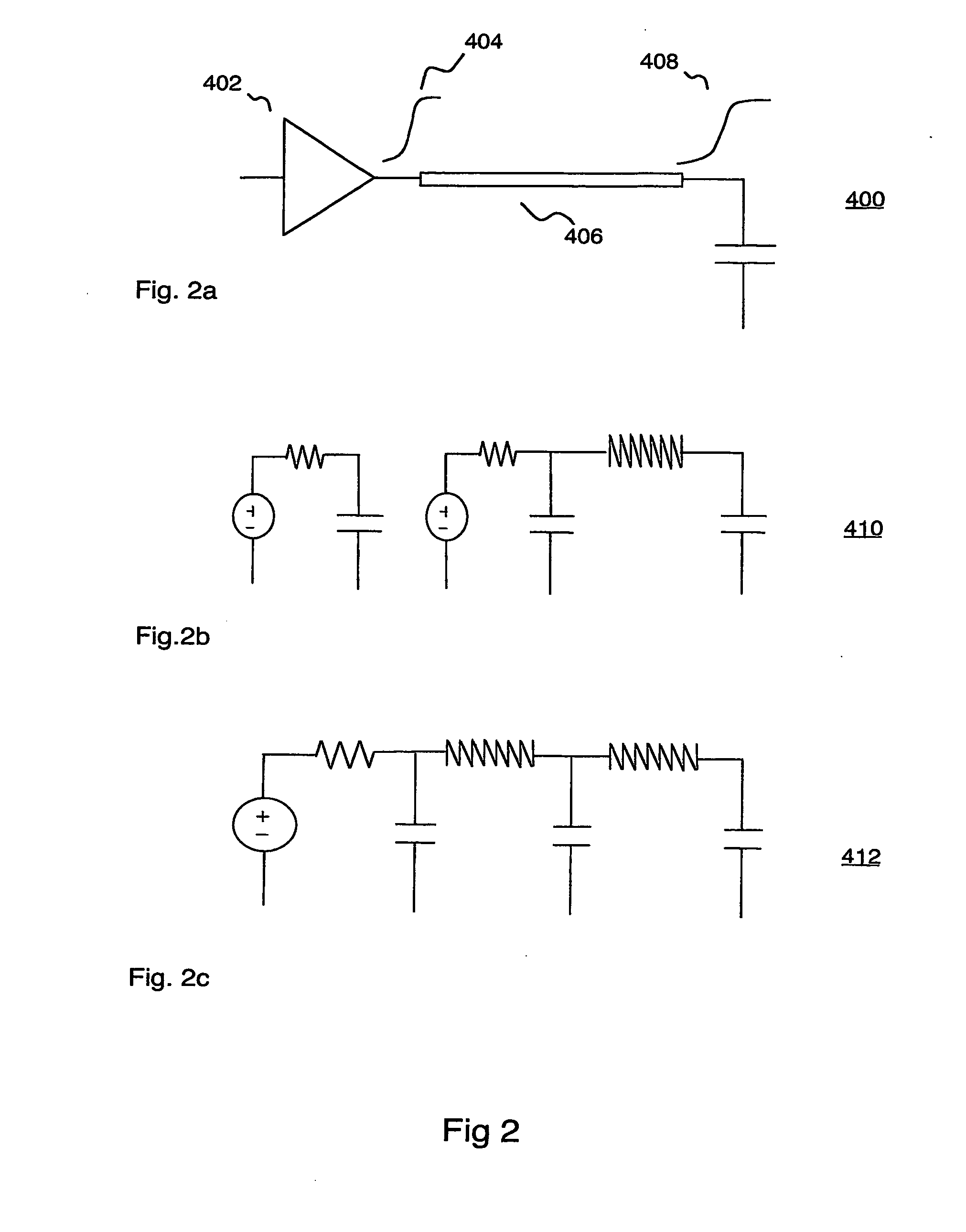Statistical delay and noise calculation considering cell and interconnect variations
a technology of interconnection variation and delay, applied in the field of integrated circuit design performance analysis and optimization, can solve the problems of significantly affecting circuit performance and product yield, logic cell delay models are becoming more and more complicated, and methods are very time-consuming, and achieve low cost, high accuracy, and efficient calculation of nominal delay and its sensitivity over different parameters.
- Summary
- Abstract
- Description
- Claims
- Application Information
AI Technical Summary
Benefits of technology
Problems solved by technology
Method used
Image
Examples
Embodiment Construction
[0032]The invention taught herein is broadly represented in FIG. 1. The invention provides a method of determining statistical delay 302 considering non-linear input waveform and receiver capacitance. The invention further provides a method for statistical noise calculation 304 considering non-linear victim driver resistance model and multiple timing windows. The invention further provides statistical crosstalk delay calculation 306 combining non-cross-talk statistical delay and statistical noise information using pure analytical approaches and guarantee pessimism (i.e., satisfying a verification condition ensuring the IC chip circuits function).
[0033]In modern VLSI digital circuit, logical cell delay is a function of different physical sources. Cell delay is a function of non-linear input waveform, non-linear receiver load capacitances, resistive interconnect load, crosstalk effect and process and environmental variations.
[0034]With the increasing effects of interconnect resistance...
PUM
 Login to View More
Login to View More Abstract
Description
Claims
Application Information
 Login to View More
Login to View More - R&D
- Intellectual Property
- Life Sciences
- Materials
- Tech Scout
- Unparalleled Data Quality
- Higher Quality Content
- 60% Fewer Hallucinations
Browse by: Latest US Patents, China's latest patents, Technical Efficacy Thesaurus, Application Domain, Technology Topic, Popular Technical Reports.
© 2025 PatSnap. All rights reserved.Legal|Privacy policy|Modern Slavery Act Transparency Statement|Sitemap|About US| Contact US: help@patsnap.com



